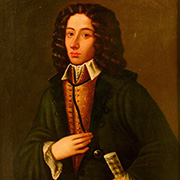Giovanni Battista Pergolesi (1710–1736) undoubtedly had one of the shortest creative careers of all the important composers in the canon of Western music. Within a period of just six years, his comparatively small number of complete compositions became established as his musical legacy. One of his best-known works, the Stabat mater for soprano and alto solo and orchestra, was composed in 1735/36 in the Franciscan monastery in Pozzuoli near Naples. There, Pergolesi, suffering from tuberculosis, spent the last months of his life. The work was probably first performed in March 1736.
The speed with which the work became established after Pergolesi’s death is remarkable. As early as 1739 Charles de Brosses described the composition as a “masterpiece”, and by about the mid-1740s, numerous copies and arrangements were already in circulation. One of the earliest and certainly the most remarkable arrangements is the one by Johann Sebastian Bach; in his transcription, instead of the Latin original, he used a German rhyming paraphrase of Psalm 51 (Tilge, Höchster, meine Sünden BWV 1083). The great popularity of the Stabat mater has continued undiminished from the 18th century to the present.
The new Urtext edition published by Bärenreiter-Verlag is based on the autograph manuscript, whose existence amongst the surviving copies of Pergolesi’s output is a stroke of good fortune. In addition to this, an important secondary source is a manuscript full score made shortly after the first performance, now preserved in Naples. This manuscript, with its detailed figuring and numerous dynamic markings in the bass part, was probably used by a continuo player. This contributes considerably to clarifying unclear and ambiguous places in the very sparsely-figured autograph manuscript, and at the same time provides important insights into the early performing tradition of the work. All editorial decisions resulting from consulting this source are clearly listed in the Critical Commentary of the edition.
Stefan Gros
(from [ta]kte 1/2013)



